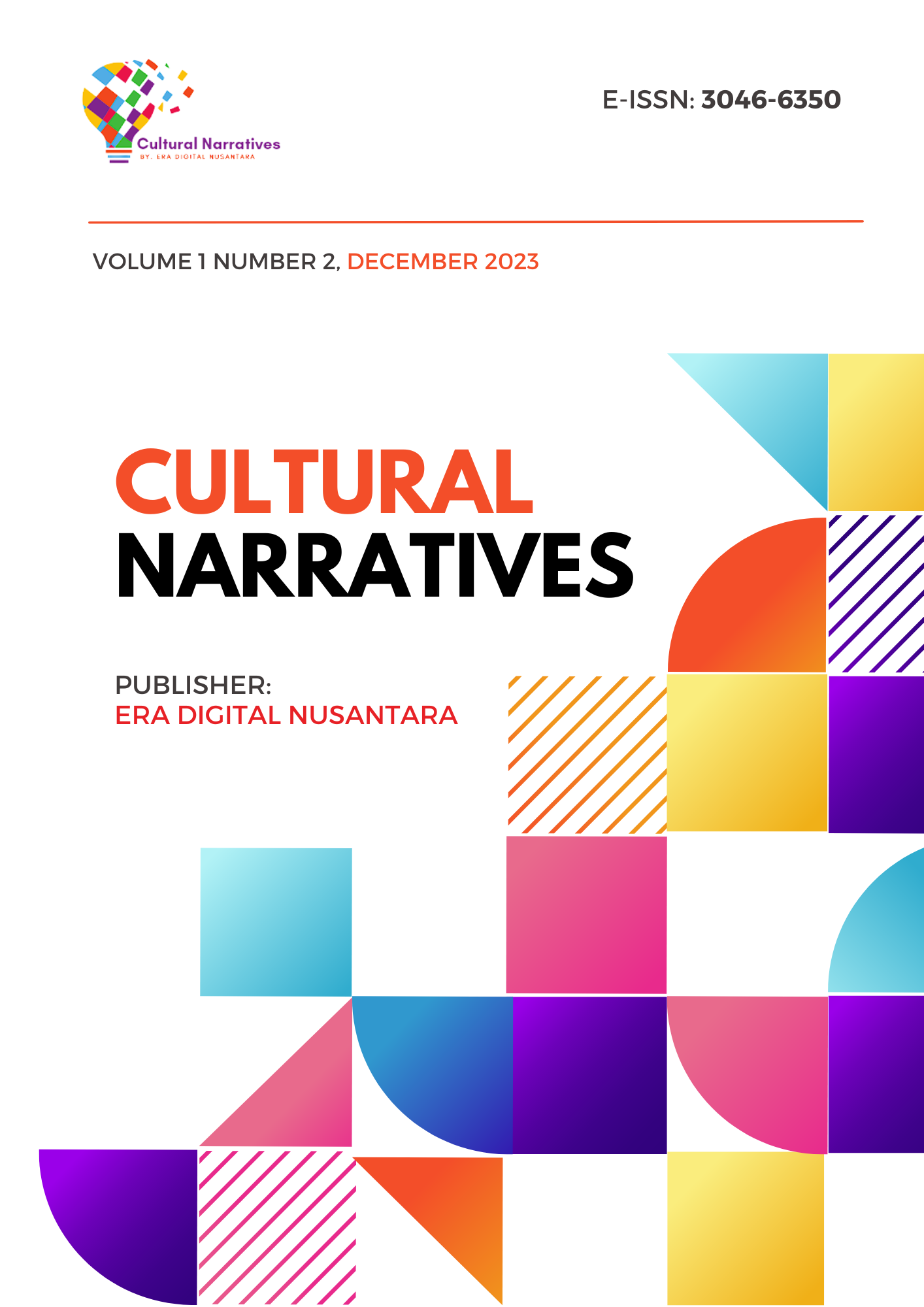Decoding the Perpetuation of Patriarchal Culture in the Barbie Movie
Main Article Content
Abstract
This research aims to analyze the representation of patriarchal culture in the Barbie film through a semiotic study that uses Roland Barthes’ theory. Roland Barthes developed semiotic theory into three parts, namely denotation, connotation, and myth, but in this study, the researchers only utilized connotation and denotation. This research uses a descriptive qualitative method. The data was taken from the scenes and script of the Barbie 2023 film. The researchers collected data by watching the film, observing the characters in every scene and the script, then taking some notes to categorize the semiotic symbols based on Roland Barthes' theory and analyzing the research data. The results of this research show that despite the movie "Barbie," association with feminism, it does not change the fact that the movie still embodies a patriarchal culture that harms women. This cultural framework perpetuates traditional gender roles, positioning men as leaders, decision-makers, and primary providers while assigning women subordinate roles. In patriarchal cultures, male privilege is ingrained, leading to the marginalization and subjugation of women. This entrenched culture of male privilege influences deep-rooted misogyny, sexism, and societal expectations.
Article Details

This work is licensed under a Creative Commons Attribution-NonCommercial-ShareAlike 4.0 International License.
Authors who publish with Cultural Narratives agree to the following terms:
- Authors retain copyright and grant the journal the right of first publication with the work simultaneously licensed under a Creative Commons Attribution-ShareAlike 4.0 (CC BY-SA.4.0) that allows others to share the work with an acknowledgment of the work's authorship and initial publication in this journal.
- Authors are able to enter into separate, additional contractual arrangements for the non-exclusive distribution of the journal's published version of the work (e.g., post it to an institutional repository or publish it in a book), with an acknowledgment of its initial publication in this journal.
- Authors are permitted and encouraged to post their work online (e.g., in institutional repositories or on their website) prior to and during the submission process, as it can lead to productive exchanges, as well as earlier and greater citation of published work. (See The Effect of Open Access)
References
Albiladi, W. S., Abdeen, F. H., & Lincoln, F. (2018). Learning English through Movies: Adult English Language Learners’ Perceptions. Theory and Practice in Language Studies, 8(12), 1567. https://doi.org/10.17507/tpls.0812.01
Badaoui, S. E. (2016). Gender-Based portrayal as media form in society. Global Media Journal, 14(26), 1. https://www.globalmediajournal.com/open-access/genderbased-portrayal-as-media-form-in-society.pdf
Dianiya, V. (2020). REPRESENTATION OF SOCIAL CLASS IN FILM (Semiotic analysis of Roland Barthes Film Parasite). Profetik: Jurnal Komunikasi, 13(2), 212. https://doi.org/10.14421/pjk.v13i2.1946
Gwen, H. (2009). Varieties of patriarchy and violence against women: Resurrecting "patriarchyg" as a theoretical tool. Violence Against Women, 15(5), 553-573. 10.1177/1077801208331246
Lebyedyeva, N. A. (2019). Fiction films in the educational process. South Asian Research Journal of Arts, Language and Literature, 01(01), 36–39. https://doi.org/10.36346/sarjall.2019.v01i01.006
Moleong. F. (2014). Metodologi Penelitian Kualitatif Edisi Revisi. Bandung: PT Remaja Rosdakarya.
Octaviani, M. A. (2021). Analisis Semiotika Roland Barthes Dalam Film Korea Baseball Girl.Jurnal Ilmu Komunikasi, 1, 9-25.
Pradanri, W. J. (2018). Movie as a medium to create an equal society. E3S Web of Conferences, 73, 14009. https://doi.org/10.1051/e3sconf/20187314009
Rudy, K. P. P., & Wijayanti, C. N. (2023). Semiotic analysis of sexual harassment representation in the film “Penyalin Cahaya.” Jurnal Mantik, 7(1), 86–99. https://doi.org/10.35335/mantik.v7i1.3633
Tyson, L. (2006). Critical Theory Today: A User-Friendly Guide. New York: Routledge.
Vera, N. (2014). Semiotika dalam Riset Komunikasi. Bogor: Ghalia Indonesia.
Yusrina, R. (2022). An analysis of popular fiction movie: Feminism in movie Miss Peregrine’s Home for Peculiar Children (2016). Rubikon, 9(2), 142. https://doi.org/10.22146/rubikon.v6i2.73536

